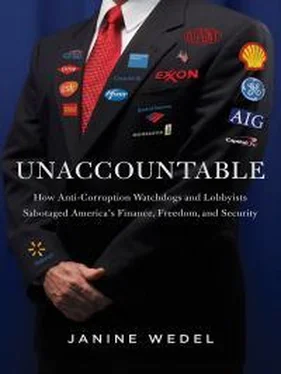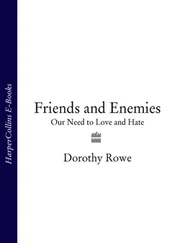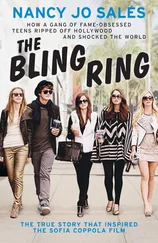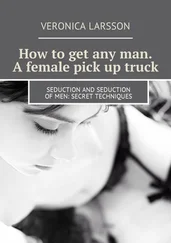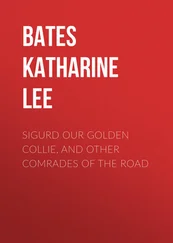80. Elizabeth Warren, “The Market for Data: The Changing Role of Social Sciences in Shaping the Law.” Wisconsin Law Review, vol. 2002, no. 1, 2002 (http://papers.ssrn.com/sol3/papers.cfm?abstract_id=332162).
CHAPTER 9
1. According to the Oxford Dictionaries (http://www.oxforddictionaries.com/us/definition/english/astroturfing), astroturfing dates from the 1990s. Other sources attribute the term’s coinage to U.S. Senator Lloyd Bentsen in 1985 (http://dictionary.sensagent.com/Astroturfing/en-en/).
The Guardian further explains (Adam Bienkov, “Astroturfing: what is it and why does it matter?” The Guardian, February 8, 2012 [http://www.theguardian.com/commentisfree/2012/feb/08/what-is-astroturfing]): “Astroturfing is the attempt to create an impression of widespread grassroots support for a policy, individual, or product, where little such support exists. Multiple online identities and fake pressure groups are used to mislead the public into believing that the position of the astroturfer is the commonly held view.”
2. See, for example, Richard W. Pollay, “Propaganda, Puffing and the Public Interest: The Scientific Smoke Screen for Cigarettes.” Public Relations Review, vol. 16, no. 3, 1990, pp. 39-54 (http://works.bepress.com/richard_pollay/22). See also Yussuf Saloojee and Elif Dagli, “Tobacco industry tactics for resisting public policy on health.” Bulletin of the World Health Organization, vol. 78, no. 7, 2000 (http://www.ncbi.nlm.nih.gov/pubmed/10994263); Sy Mukherjee, “How Big Tobacco’s Marketing Tactics Continue to Encourage Americans’ Unhealthy Habits.” ThinkProgress, April 8, 2013 (http://thinkprogress.org/health/2013/04/08/1836191/big-tobacco-tactics-playbook/); and Tim Lambert, “Just how many astroturf groups did tobacco fund?” ScienceBlogs, February 19, 2008 (http://scienceblogs.com/deltoid/2008/02/19/just-how-many-astroturf-groups/).
3. R. J. Reynolds, “Building A ‘Public Constituency,’” R.J. Reynolds Report, 1987 (http://legacy.library.ucsf.edu/tid/xvg33d00).
4. With regard to the history of these categories, please note the following. With regard to 501(c)(4)s, it appears that a hundred years ago, legislation opened the door for “organizations which could not qualify as charitable, educational, or religious, but whose activities somehow benefited the general public” (Case Western Reserve University law professor Laura B. Chisolm in a 1988 article for the Indiana Law Journal, cited in the Wall Street Journal ; Jacob Gershman, “The Surprisingly Muddled History of the 501(c)(4) Exemption.” Law Blog, Wall Street Journal, May 16, 2013 [http://blogs.wsj.com/law/2013/05/16/the-surprisingly-muddled-history-of-the-501c4-exemption/]). “Over the years, the IRS expanded the exemption into more political territory, allowing 501(c)(4) groups to engage in lobbying and other political activity. The ‘notion that the section 501(c)(4) social welfare organization category is an appropriate classification for politically active charitable organizations seems to have originated with the IRS in the 1950’s,’ wrote Ms. Chisolm.” This IRS document suggests that these groups were formed and given tax-exempt status because they were filling in the gaps for spotty government assistance a century ago, and also because people didn’t trust government, generally, still wary of a “rebirth” of monarchy/bureaucracy (Paul Arnsberger, Melissa Ludlum, Margaret Riley, and Mark Stanton, “A History of the Tax-Exempt Sector.” Statistics of Income Bulletin, Internal Revenue Service , Winter 2008 [http://www.irs.gov/pub/irs-soi/tehistory.pdf]).
5. Caroline E. Mayer and Amy Joyce, “The Escalating Obesity Wars.” Washington Post, April 27, 2005 (http://www.washingtonpost.com/wp-dyn/content/article/2005/04/26/AR2005042601259.html).
6. Ibid.
7. The Center for Consumer Freedom, “CCF Warns Congress not to Fall for Propaganda.” Center for Consumer Freedom, February 6, 2014 (http://www.consumerfreedom.com/2014/02/ccf-warns-congress-not-to-fall-for-propaganda/).
8. The Center for Consumer Freedom (http://www.consumerfreedom.com/about/).
9. The Center for Consumer Freedom, “The Nanny” (http://www.consumerfreedom.com/wp-content/uploads/2012/06/nannybloombergad.png).
10. Stephanie Strom, “Nonprofit Advocate Carves Out a For-Profit Niche.” New York Times, June 17, 2010 (http://www.nytimes.com/2010/06/18/us/politics/18berman.html?pagewanted=all&_r=0).
11. “Facts and Stats about the Labor Movement.” UnionFacts.com, Center for Union Facts (http://www.unionfacts.com/).
12. Strom, op. cit.
13. The Greenpeace-member-turned-PR-consultant is Patrick Moore. The former U.S. trade ambassador and one-time mayor of Dallas is Ron Kirk.
14. CASEnergy Coalition (http://casenergy.org/).
15. The journalist is Judy Pasternak, formerly of the Los Angeles Times. Judy Pasternak, “Nuclear energy lobby working hard to win support.” Investigative Reporting Workshop, American University School of Communication, January 24, 2010 (http://investigativereportingworkshop.org/investigations/nuclear-energy-lobbying-push/story/nuclear-energy-working-hard-win-support/).
16. Ibid.
17. Christine Todd Whitman, “Oil Spill Mustn’t End Offshore Drilling: Christine Todd Whitman.” Bloomberg, May 3, 2010 (http://www.bloomberg.com/news/2010-05-04/oil-spill-mustn-t-end-offshore-drilling-christine-todd-whitman.html.
18. Pasternak, op. cit.
19. See Timothy P. Carney, “Christine Todd Whitman writes op-ed advancing her client’s interests—NYT runs it.” Washington Examiner, August 5, 2013 (http://washingtonexaminer.com/christine-todd-whitman-writes-op-ed-advancing-her-clients-interest-nyt-runs-it/article/2533875); http://www.nytimes.com/2013/08/02/opinion/a-republican-case-for-climate-action.html.
20. Diane Farsetta, “The Other Half of the Nuclear Industry’s Power Couple: Christine Todd Whitman,” PR Watch , August 27, 2007, http://www.prwatch.org/news/2007/08/6370/other-half-nuclear-industrys-power-couple-christine-todd-whitman
21. Many of Whitman’s articles can be found here: CASEnergy, “News and Events” (http://casenergy.org/category/news/).
22. See, for instance, Piotr Ozierański, Who Rules Postcommunism? The Case of Drug Reimbursement Policy in Poland . Cambridge University dissertation, 2011, p. 101.
23. Shannon Brownlee, Overtreated: Why Too Much Medicine Is Making Us Sicker and Poorer. New York: Bloomsbury, 2007, p. 193.
24. Jessica Marshall and Peter Aldhous, “Patient groups special: Swallowing the best advice?” NewScientist, Issue 2575, October 27, 2006 (http://www.newscientist.com/article/mg19225755.100).
25. Robert Pear, “Drug Company Ads Attack Medicare Coverage of Drugs.” New York Times, July 29, 1999 (http://www.nytimes.com/1999/07/29/us/drug-company-ads-attack-medicare-coverage-of-drugs.html).
26. Public Citizen, “Organizing Astroturf: Evidence Shows Bogus Grassroots Groups Hijack the Political Debate; Need for Grassroots Lobbying Disclosure Requirements.” Public Citizen, January 2007 (http://www.citizen.org/documents/Organizing-Astroturf.pdf).
27. Senator Chuck Grassley, “Grassley works for disclosure of drug company payments to medical groups.” Press release, December 8, 2009 (http://www.grassley.senate.gov/news/Article.cfm?customel_dataPageID_1502=24413).
28. Gardiner Harris, “Drug Makers Are Advocacy Group’s Biggest Donors.” New York Times, October 21, 2009 (http://www.nytimes.com/2009/10/22/health/22nami.html).
29. Ibid.
30. Barry Meier, “Senate Inquiry Into Painkiller Makers’ Ties.” New York Times, May 8, 2012 (http://www.nytimes.com/2012/05/09/health/senate-panel-to-examine-narcotic-drug-makers-financial-ties.html).
Читать дальше
